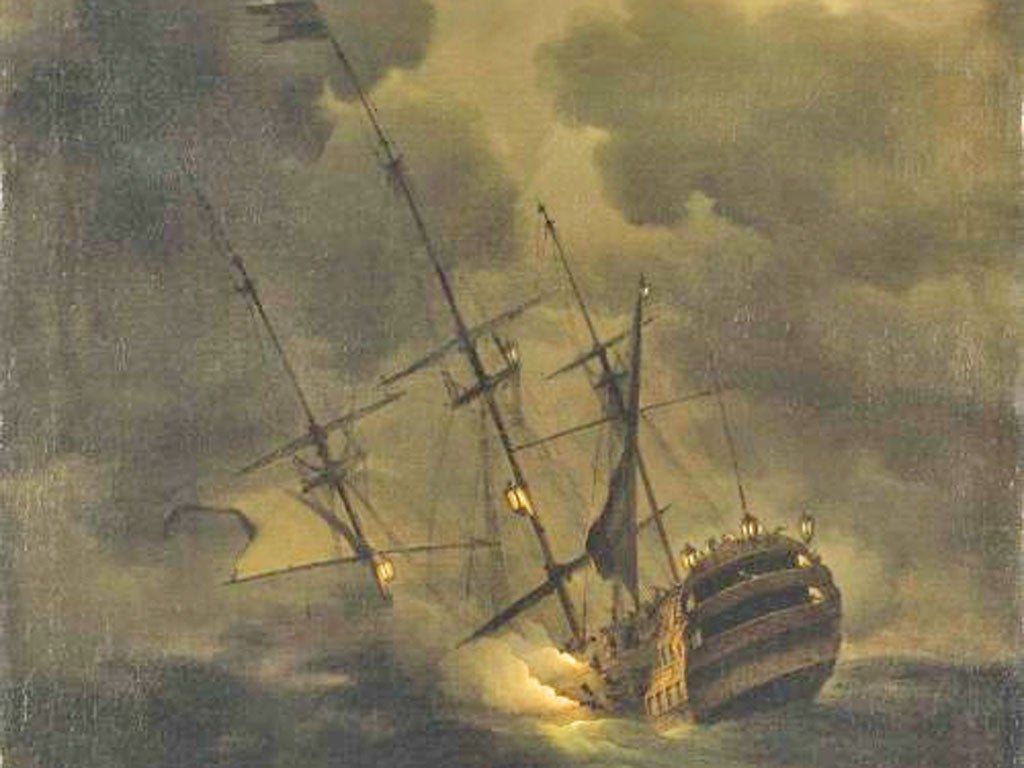Scientist warns trawler damage to shipwrecks will result in an archaeological catastrophe

International action is urgently required to save the world's imperilled historic shipwrecks from the ravages of commercial fishing, experts have warned.
Industrial trawling capable of destroying fragile underwater heritage is occurring on a scale creating an archaeological catastrophe comparable to the looting of the National Museum in Baghdad or the destruction of the Buddhas of Bamiyan.
The seabed is often described as the world's greatest museum, but it is estimated that 42 per cent of the globe's three million wrecks have been damaged by the effects of nets and snagging.
The scale of the devastation means that the chances of again recovering iconic vessels such as the Mary Rose are decreasing, while there are fears that HMS Victory – the predecessor to Nelson's flagship and considered the greatest warship ever – has already been damaged by trawlers in the English Channel and is at risk of total destruction.
Dr Sean Kingsley of Wreck Watch International is calling for the creation of national "red lists" for shipwrecks of major international importance at risk from bottom trawling similar to those created by the International Council of Museums (ICOM) for cultural objects.
But attempts to safeguard sunken vessels – some dating back to the earliest civilisations – are being hampered by a lack of political will and a shortage of funds, he said.
"Thousands of shipwrecks worldwide lie in the path of fishing trawlers, but governments are failing to find even small change to require the damaging effects of a multi billion-dollar industry to be monitored," said Dr Kingsley.
"The struggle to save even a small percentage of the world's most important shipwrecks is a fight over funds. Compared to marine ecosystems, from kelp to sharks, archaeology cuts an isolated figure in marine science. For a hugely romantic and adventurous field we are failing to get the message across that the sunken past matters," he said.
It is estimated that an area of seabed the size of Brazil, Congo and India is trawled each year, disrupting sediment and causing potential damage to submerged ships. Recent research has suggested that more than half of the North Sea is at risk from beam trawling – one of the most damaging types of fishing – while in the North Adriatic it is believed that every metre has been swept by trawlers three times. Unlike offshore dredging or pipeline cutting, fishing has no legal obligation to mitigate its impact on the marine archaeology.
There are no laws or even best practice initiatives on how boats should avoid snagging or on reporting finds in international waters.
The continued presence of trawlers in archaeologically rich waters has been compared to the ploughing of ancient battle sites by farmers.
But marine finds often tell archaeologists much more about what life was like than those on land.
Experts call it the "Pompeii effect" when a culture and its artefacts are freeze-framed in a moment of calamity.
Organic matter can be preserved for hundreds of years under mud and sand and large objects are much less likely to be looted or melted down.
However Dr Kingsley said he was realistic about the prospect of enforcing exclusion zones on commercial fisheries which were already struggling with catastrophic rates of species decline.
Wrecks are often rich breeding grounds for fish and modern trawlers find it almost impossible to determine whether they are fishing over a wreck or a natural feature of the seabed. Barrie Deas, chief executive of the National Federation of Fishermen's Organisations, said that modern GPS and chart plotting technology meant fishermen were able to avoid wrecks more easily than ever before and that it was in their interests not to trawl over them because they were a danger to their gear and crew.
"Protecting shipwrecks for historical and aesthetic reasons is a concern shared in the fishing industry as well," he added.
Join our commenting forum
Join thought-provoking conversations, follow other Independent readers and see their replies
Comments